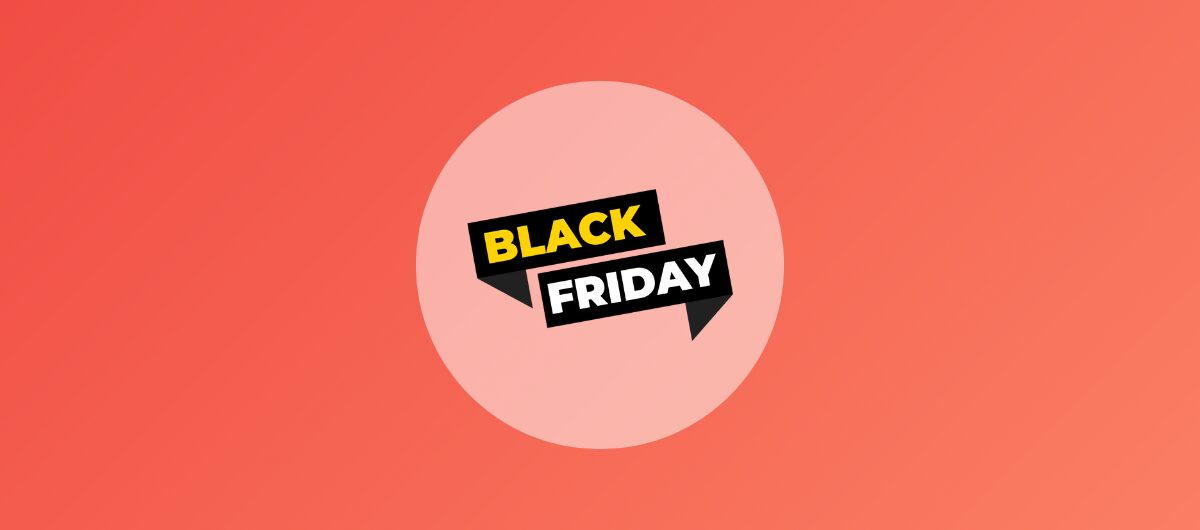How to Create a Company Email Newsletter in 10 Simple Steps
September 21, 2021 8 min read

Have you noticed that in recent years brands have started asking you for your email address before you’ve even ordered anything? Sometimes they’ll even incentivize consumers with a sign-up discount or loyalty program.
Companies don’t just want to take your email address and call it a day — they want this information so they can build a relationship with you through their email newsletter.
Email newsletters are a great way to maintain regular contact with your clients. They’re also inexpensive, compared to other forms of promotion. Especially when you consider the return on investment that email marketing delivers. The generally accepted stat is that for every $1 spent on email marketing, you earn $38.
Let’s dive into some basics first, then discuss the how-tos for creating a company email newsletter.
What Is an Email Newsletter and Why Do You Need One?
An email newsletter is a series of emails, sent on a consistent schedule, around a central focus ranging from industry news to product updates and everything in between. Some brands use newsletters to inform email subscribers of sales or partnerships, while others are more content- and education-focused.
No matter how you focus your company newsletter, it will serve as a touchpoint with your customers, a consistent form of communication that keeps you top of mind and reinforces your brand identity.
But don’t we all get too many emails? Won’t customers be annoyed by your newsletter every week? Not if it provides value. As long as your newsletter meets your subscribers’ needs, they’ll be happy to see it in their inbox.
There are two main components of a good newsletter. The first component is the newsletter design, and the second is the newsletter content. If you don’t pay enough mind to either of these, your newsletter campaign is likely to fall flat on its face.
Newsletter Design
Newsletters are very simple to design. Ideally, you can create a newsletter design in the span of five minutes. All you need is a good editor and email templates.
Both these things are available with Benchmark Email. Even on the free Benchmark plan, once you sign up, you get to choose from a variety of email newsletter templates, which are based on a range of themes. For instance, if you have organized a special promotion to celebrate the spirit of Halloween, then you can select a Halloween-themed template.
Benchmark Email’s drag and drop editor is simple to use. After you select an appropriate template and open it in the editor, you can make changes in every section and apply your company logo and branding. The best part about the Benchmark Email Drag and Drop Editor is that you can add new sections anywhere you’d like in the newsletter. You can also clear the default color scheme of the template and put a new one of your choice.
Newsletter Content
There are various different kinds of emails out there, all with different purposes. Just like every email you send, you’ll always want to have a goal in mind for your email newsletter. Once you have your goal, it’s easy to understand what content should go into your newsletters.
If it’s to inform, you’ll want to include company updates, new product updates or services you’re offering, educational content, and any other news that’s relevant to your subscribers.
Perhaps the goal of your newsletter is to sell. If it is, you’ll want to make sure you’re highlighting the goods or services you’re pushing. Make sure your copy includes compelling CTAs to drive the traffic to your site where the real sale can take place.
If the goal of your newsletter is to create engagement with your subscribers, the content must be aimed at that. It may mean including CTAs that encourage subscribers to share it on social media. Or it could ask a question that your subscribers can respond to – anything that will call for some interaction with your subscribers.
This process gets even easier after your first time creating your email newsletter. After that, you can copy the template and simply input the new information for the next week, month, quarter, etc. The five-minute newsletter is possible.
So, where do you begin when putting an email newsletter together? We’ve got you — leaning on our experience in the email marketing space, we’ve compiled this easy step-by-step list to show you how to take your newsletter from idea to reality!
How to Create Your Company Newsletter
Here are ten simple steps to get your company newsletter up and running:
1. Set Your Goals
The first thing you need to decide is what purpose you want your newsletter to serve. Will it be a regular update on your company, maybe highlighting a different employee every email? Or is it going to be more of a promotional campaign, with sale announcements and press about new products? Think about what you want to offer your audience.
You’ll also want to think about what you hope to get out of your newsletter and where it fits into your larger marketing strategy. Whether you’re looking to build your list through content that incentivizes email forwards and sign-ups, drives sales on your website, or simply builds brand awareness, make sure you have your end goal clear in your mind before you strategize.
2. Define and Segment Your Audience
The other thing you need to know before you create your strategy is your audience. Who are they? What do they want? Understanding your audience will help you serve them better, which will limit the chances that they’ll unsubscribe and increase the chances that they’ll stick with your brand for the long term.
Think about what caused your subscribers to sign up for your list in the first place. If it was an incentive, like a discount, they might be more interested in promotional emails. On the other hand, if they signed up of their own volition or to gain access to informational content, they’re likely to respond positively to educational newsletters.
You can (and should) segment your audience by demographic and interests so you can customize your content more easily and personalize your readers’ experiences.
3. Document Your Strategy
If your company already has a documented email marketing strategy, use that as the framework for your newsletter strategy. If you’re starting from scratch, draft a document that includes the goal(s) you’ve set and your audience (current and planned), then set parameters for frequency (weekly, monthly, etc.) and voice.
It can be helpful to read newsletters from your competitors, both to see how they’re successful and to find ways to differentiate your brand in the market.
4. Plan Your Implementation
Once you know what your newsletter will focus on and how often you’re going to send it out, your next step is to make a plan for implementing your strategy. Designate specific team members to be responsible for brainstorming, building, and crafting content and make sure everyone has access to the master schedule.
Automation tools like Benchmark Email streamline this process and enable you to segment your list, personalize your content, and schedule emails weeks or even months in advance. Automating these manual tasks frees up your team to focus on the overall strategy and the quality of your content rather than spending time on busy work.
5. Create and Assemble Your Content
Ideally, you should plan out your content by theme or subject at least a few months in advance, so the narrative thread will be consistent, and the more completed content you can assemble ahead of time, the better.
Make sure you include a clear, visible call to action somewhere in each email — what the action is will differ depending on the goal of your newsletter.
6. Select a Newsletter Template
The email template you select will ensure your emails are effectively and beautifully formatted (and, crucially, that they’re optimized for mobile devices). If you don’t currently use a platform that offers templates, or you don’t like the templates available, you can commission a designer to create a custom template for you.
Once you have your template, you can fill in the content you’ve created, modifying it to fit the space of the text boxes or mood of the graphics or adding new sections as needed. Don’t forget to add a section with your contact information and social media handles so customers can easily find your business and follow it.
7. Plan the Details
You’ve got the bulk of your content done, so now it’s time for the last details. Decisions like how to write the subject line, which keywords to use in your meta description, and what to put in the sender field may seem insignificant, but they can all have an effect on your open rates and deliverability, which are crucial to your newsletter’s success.
When you’ve got your first email all prepped, test it by sending yourself a preview. Does the subject line get cut off and need to be shortened? Where did the email land, in your inbox or in spam? Make adjustments as needed, and remember that A/B testing is a great way to hone these details as you begin to send your newsletters.
8. Ensure Compliance
Lastly, before you launch your newsletter, make sure you’re complying with laws and regulations around business emails. You might have heard of GDPR, which is a European privacy law stating that email marketers must get active consent to send messages — everyone on your list who lives in Europe must have opted in manually.
Less discussed (because it’s not as recent or sweeping) but more broadly applicable is the CAN-SPAM law, which says that email marketers need to have a clear, easy unsubscribe link in their email footers.
Make sure your emails comply with these and any other applicable regulations before sending them out.
9. Send it Out!
Okay, you’ve got your segmented email list, your personalization and details planned out, and, most importantly, your shining content, and your test email is flawless — it looks like you’re finally ready to send your first email!
Hit that send button and then forget all about it until it’s time for the next one to go out!
10. Track Your Results
Just kidding — of course you’re not going to set it and forget it. Marketing is all about the data, and email newsletters are no exception. Check your A/B subject line tests to see what’s compelling subscribers to open your emails; look at click-through rates to see what content is leading to further engagement; watch that subscriber count to see if it’s going up or (hopefully not) down.
All these metrics can help you make adjustments to improve your newsletters, and with each new email, your strategy should get better and better. If you’re not seeing the kind of success you expected, investigate why that might be and make a plan to course-correct.
Email marketing is one of the most effective (and lucrative) tactics for building your customer base and increasing revenue, so creating a newsletter is definitely in your company’s best interest. With this straightforward list of steps, you’re ready to get in the game and start sending email newsletters that will wow your subscribers and grow your business!






